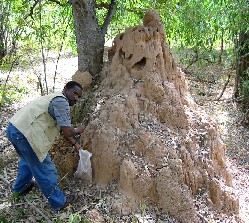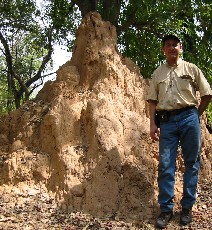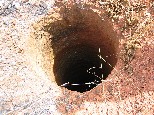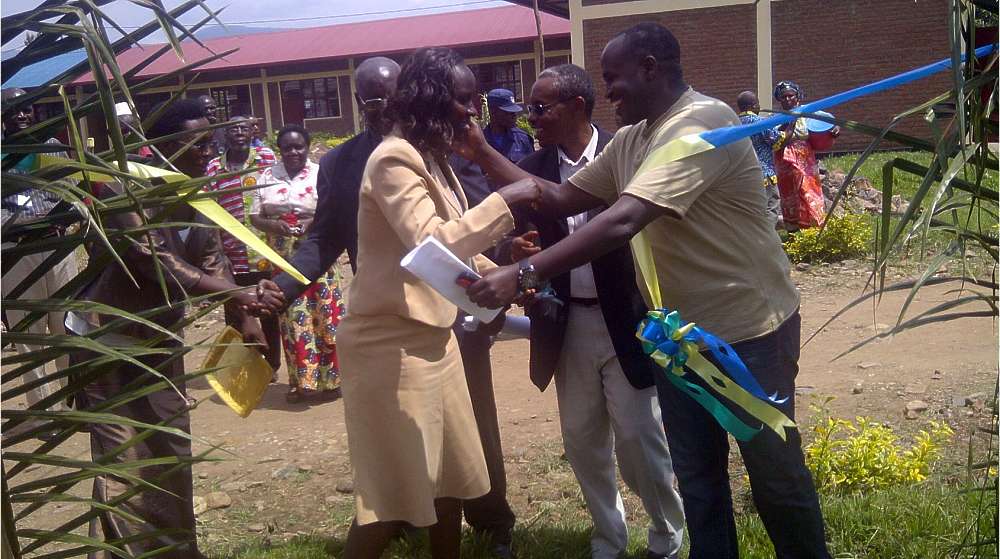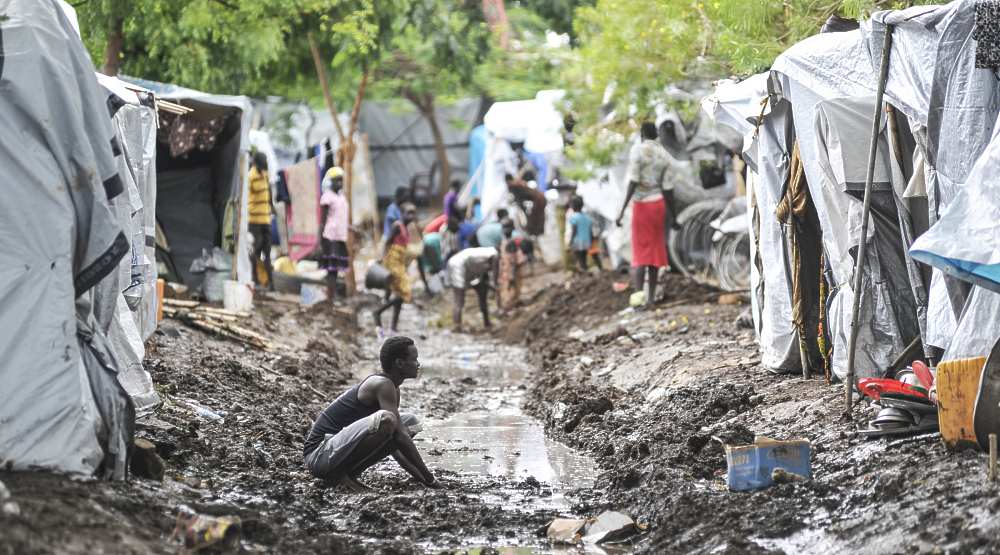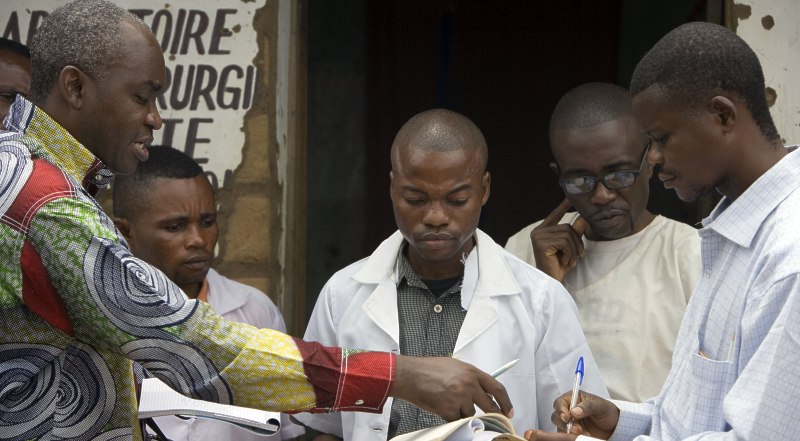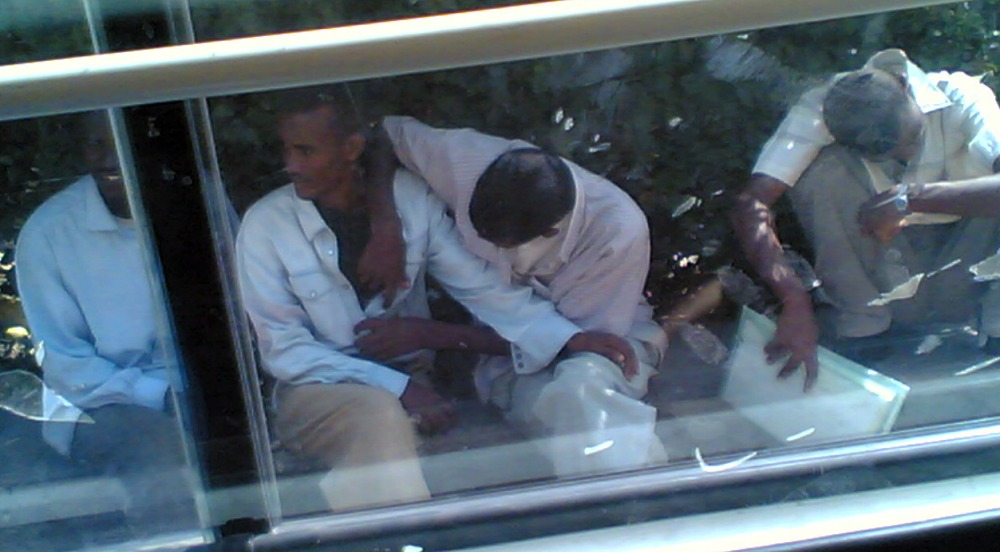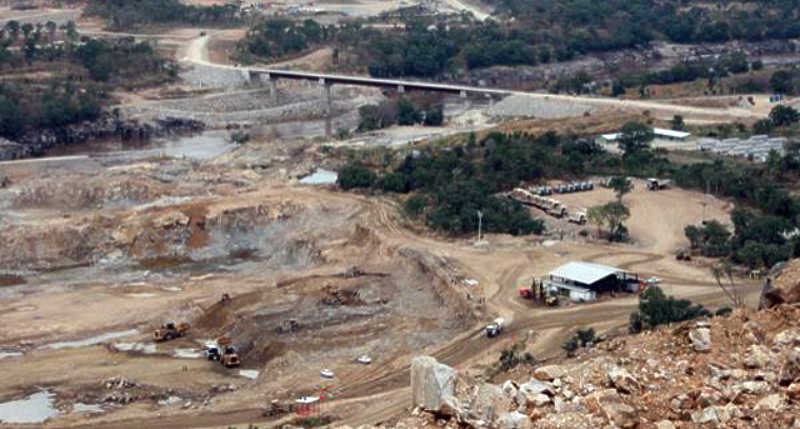|
Mali Economy - Development | Science - Education Termites and humans searching more gold in Mali
Jon North, President of the mining company, today announced the preliminary results of the mapping of the 219 square km Dalakan and 250 square km Sinzeni properties in southern Mali, which just have been completed. On both properties, soil and termite mound sampling had been the methods used.
- As opposed to simply taking surface soil samples, termite mounds allows us to get samples of very deep underlying soils, which would normally only be accessible via drilling or trenching, explains Nathalie Roy of North Atlantic Nickel. "Termites will dig down to the water table and that can be very, very deep," she adds. The termite mounds serve as early indication as to what may be found in the soil below but the termites actually bring up mineral grains from down below the topsoil and hard laterite in what's called saprolite which is disaggregated bedrock, Ms Roy explains afrol News. "They dig to the water table or the colony dies, and the water table can be 10's of meters below surface but is generally about 10 meters below surface." They cannot go through bedrock, however. In areas such as southern Mali, where the topsoil only gives few clues to the layers below, the 'termite mound technique' is a common sampling method and especially preferred. Here, the alternative for initial mapping would be outcrop sampling, float examination and tracing known faults - covered by layers of soil that often have arrived from far away by wind or water. The mounds, however, are everywhere in the terrain and sampling and analysing is cheap, about US$ 20.00 per sample, according to Ms Roy. The technique is of old age in West Africa, where generations of gold diggers in pre-colonial times used the termites' labour to investigate the deeper layers of the soil for gold and other precious metals and minerals. The modern mining industry rediscovered the method in the 1960s, taking samples from termite mounds in the tropics and from anthills in other regions. Reinventing this ancient and cheap method, the Vila Manica copper deposit in Mozambique were discovered in 1973. Later, the biggest kimberli
For North Atlantic Nickel's Mali operations, the reinvented method going scientific has already made operations more sustainable. In the remote areas of southern Mali, poorly connected to the main infrastructure of the region, such cheap methods can mean the exploration or non-exploration of the many promising gold fields of the area. North Atlantic Nickel is especially keen on using "those little termites 'gold diggers'" for its own purposes in Mali. The company's President Jon North, who also is a geologist, on his own was able to observe the insects' tremendous work when he "picked up 1/2 g Gold from a termite mound sample collected at our Kantela property in western Mali," Ms Roy tells afrol News. The Canadian company, although it still has to analyse the results of its newest soil samples and termite mound samples, has already been able to announce the finding of good indicators, such as several ancient areas of artisanal workings, on its two properties. If the areas collected samples - which are to be sent to a Malian laboratory for analyses - prove promising, further mapping will be made at Dalakan and Sinzeni. Then, geologists will know where exactly to conduct more detailed studies. Conventional detailed mapping of the anomalous areas, additional soil sampling at higher density and ground magnetometer surveying are already planned to go ahead early next year. Meanwhile, the enterprising termites of the southern savannas of Mali are left alone to make their own enquiries into the region's soil conditions - only to share them with future geologists. By staff writer © afrol News - Create an e-mail alert for Mali news - Create an e-mail alert for Economy - Development news - Create an e-mail alert for Science - Education news
On the Afrol News front page now
|
front page
| news
| countries
| archive
| currencies
| news alerts login
| about afrol News
| contact
| advertise
| español
©
afrol News.
Reproducing or buying afrol News' articles.
You can contact us at mail@afrol.com


